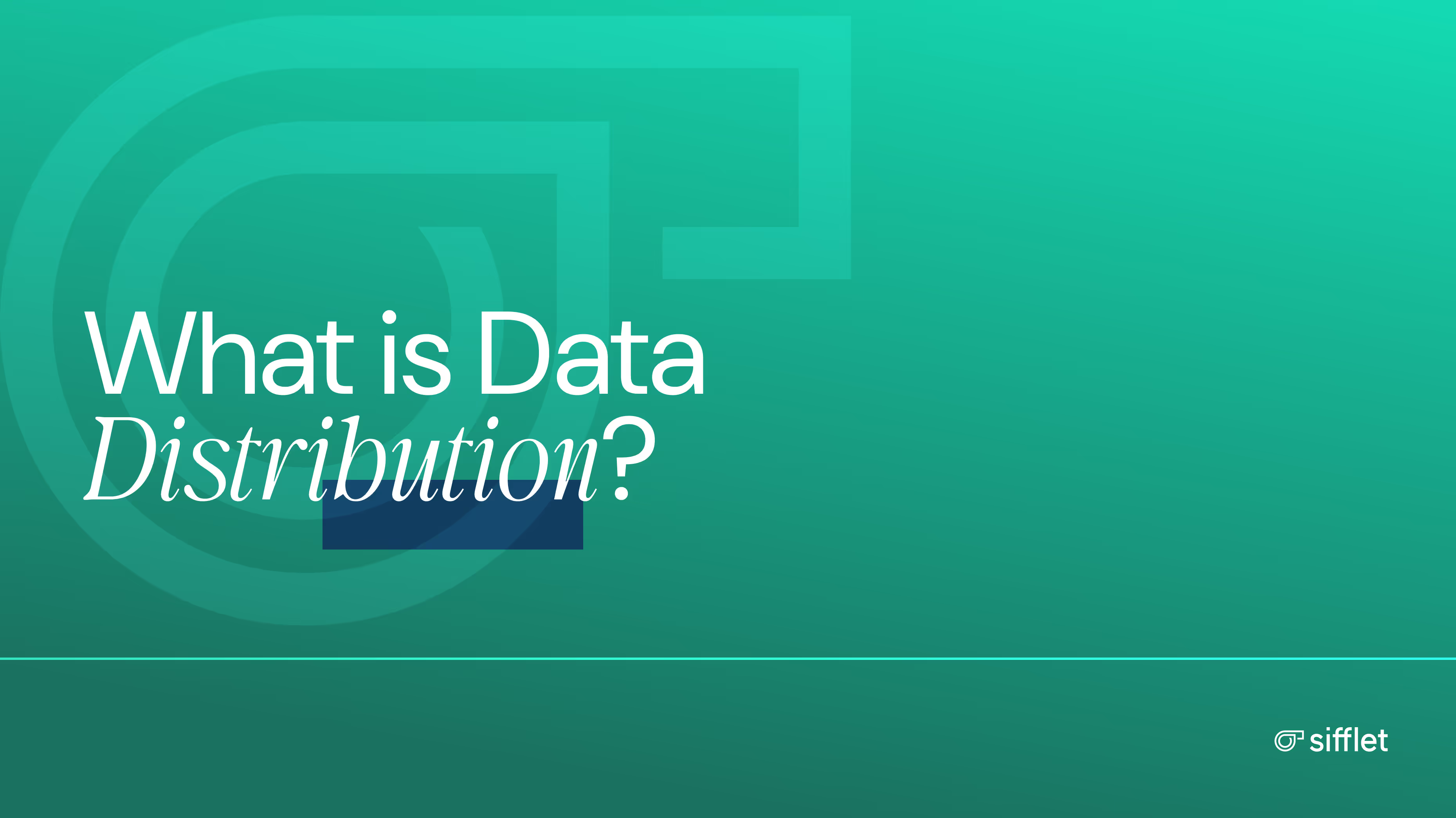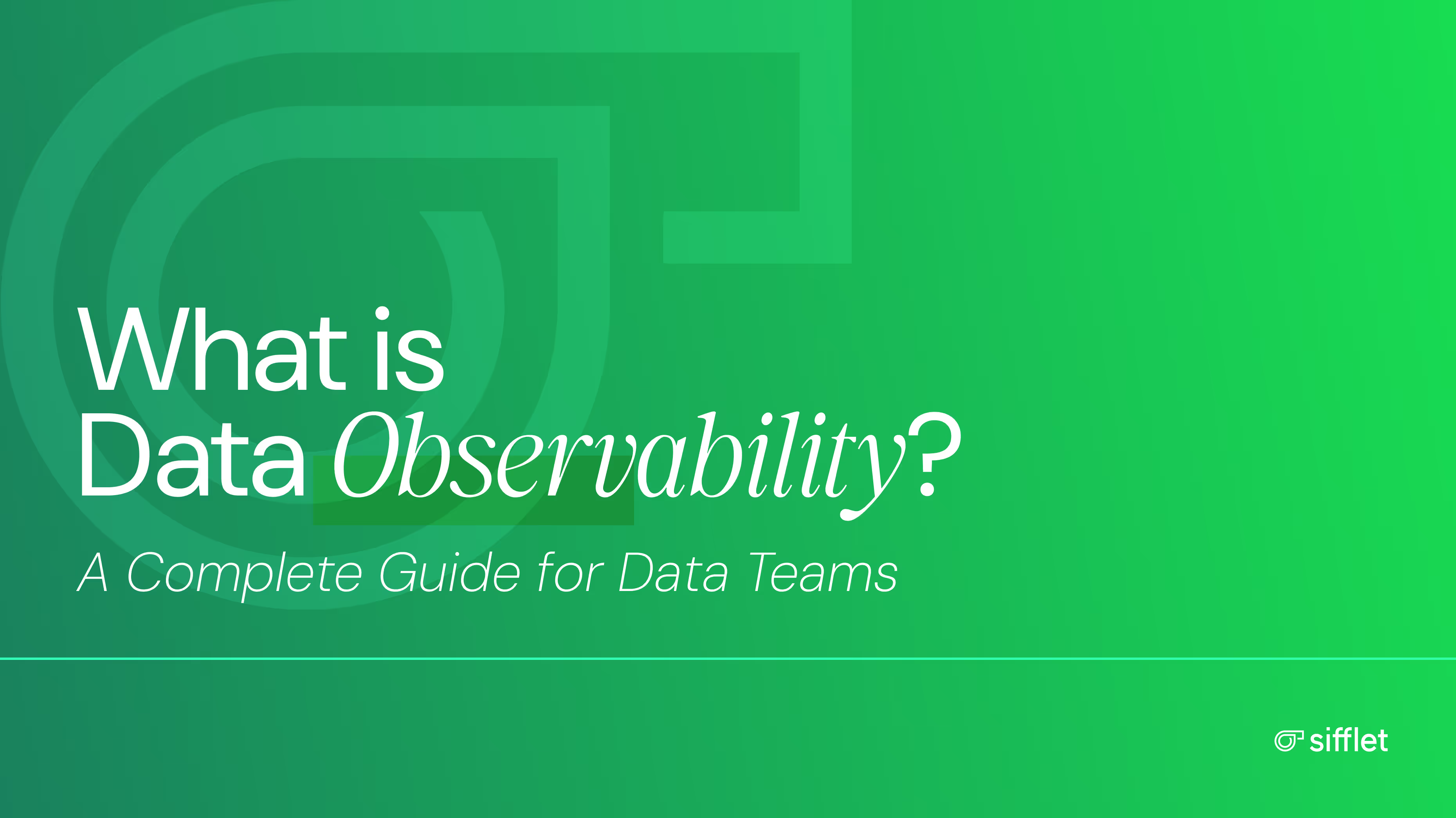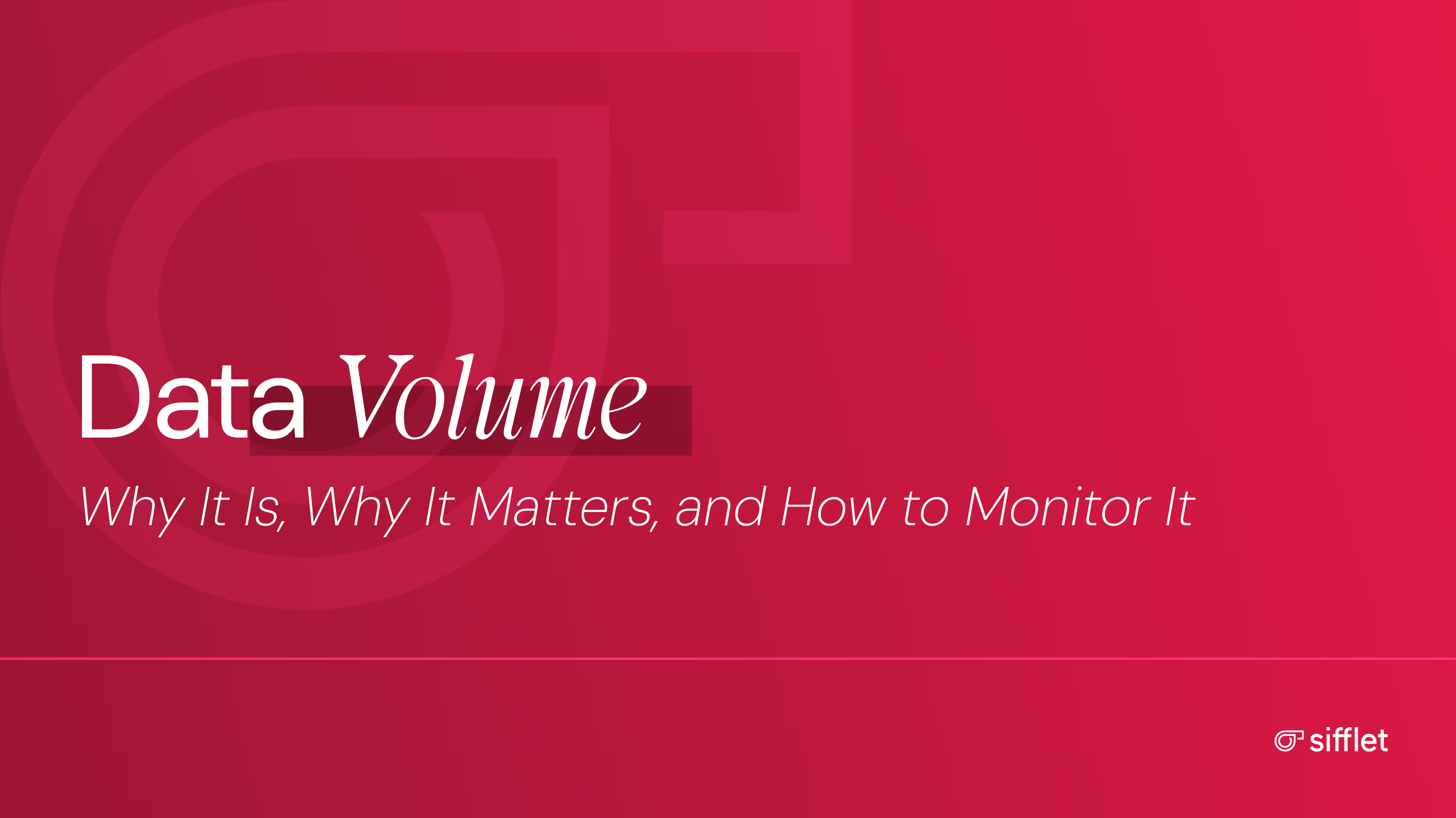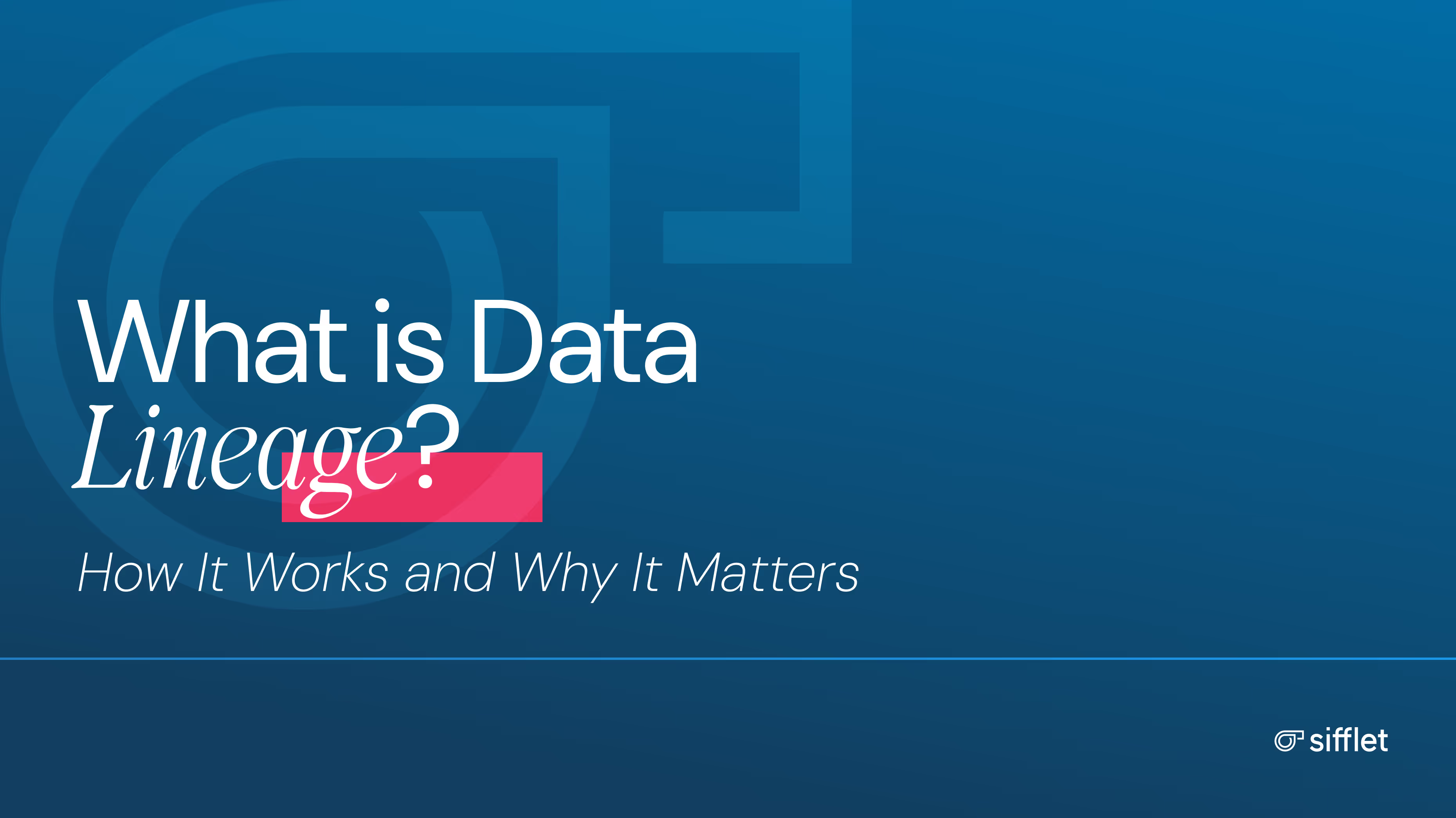Monday morning. Your sales dashboard looks normal, with steady order volumes, revenue that’s on target, and intact schema. Then your CEO walks into the meeting and asks why 90% of your sales over the weekend came from a single zip code in Nebraska…but you have no idea.
You’re experiencing a data distribution problem.
These are silent - but deadly - killers that slip past traditional monitoring while quietly breaking business logic, skewing machine learning models, and making dashboards lie with a straight face.
Most data teams are pretty good at catching schema breaks and volume drops, but data distribution issues remain an overlooked component of data observability.
The problem is that they are often the most expensive to ignore.
What is Data Distribution?
Think of data distribution as the shape of your data set, how values are spread, clustered or skewed. If volume monitoring tells you how much data you have, then distribution monitoring tells you where that data is falling.
A simply analogy is rainfall. If you track rainfall across your state, volume monitoring would tell you that you collected a total of 100 inches of rain last month.
Distribution monitoring, on the other hand, would reveal that 95 inches fell in just one county, while the rest of your state is suffering from a drought.
Data distribution helps you answer the critical question: “Is my data falling where it should?”
When it’s not, these are the most common red flags:
- Skew: Values disproportionately cluster in one area
- Missing categories: Expected segments are suddenly absent
- Anomalous outliers: Strange values that don’t fit historical patterns
- Uneven splits: Proportions that defy business logic
This matters because both business rules and machine learning models rely on predictable patterns.
If a marketing platform suddenly sees 80% of clicks coming from bot traffic, or a fraud detection model starts rejecting legitimate transactions because customer behavior has subtly shifted, you're not dealing with a volume issue, you’re dealing with a distribution problem.
How Does Data Distribution Fit into Data Observability?
Most data teams are familiar with the core pillars of data observability: freshness (is data arriving on time?), volume (do we have the right amount?), schema (is the structure correct?), and lineage (where did this data come from?).
Data distribution adds a fifth dimension: the shape and spread of your actual values.
If you were running analytics for a SaaS company’s customer success team, you might notice your pipeline shows:
- Freshness: Customer usage data arrived on schedule
- Volume: You have records for all 10,000 customers
- Schema: All the expected columns are present and properly typed
- ❓ Distribution: But wait! Suddenly 60% of your "active" users show zero logins
That's a distribution problem.
The data has arrived, it's complete, and it's structured correctly, but the pattern is wrong, which means your customer health scores are about to mislead every CSM on your team.
Here's a quick look at how distribution differs from data lineage, with which it’s often confused:
Types of Data Distribution Issues
There are 3 main types of distribution you should look out for: categorical distribution, numerical distribution and distribution in data availability.
Categorical Distribution
These involve fields with discrete values like country codes, product categories, or user segments.
Real-world example: A mid-market retail analytics company noticed their dashboard showed healthy sales across all product categories. But when they dug deeper, they discovered that 85% of "electronics" purchases were actually mis-categorized phone accessories and their actual electronics sales had dropped 40% due to supply chain issues that no one caught because the category volumes looked normal.
What to watch for:
- Missing categories that should be present
- One category suddenly dominating the distribution
- New categories appearing without explanation
Numerical Distribution
These cover continuous values like revenue, age, transaction amounts, or performance metrics.
Real-world example: A fintech startup's fraud detection system started flagging legitimate transactions as suspicious. Upon investigation, the data engineering team discovered thata partnership with a new payment processor had shifted their transaction amount distribution and suddenly 70% of payments were under $5 instead of the usual spread. Their ML model, trained on historical patterns, couldn't adapt to the new normal.
What to watch for:
- Unexpected spikes or long tails in your data
- Values clustering in unusual ranges
- Zero inflation (too many zero values)
- Outliers that break business logic
Distribution in Data Availability
Sometimes what looks like a distribution problem is actually about data access and operational issues.
Real-world example: A healthcare technology company thought they had a distribution issue when patient demographic data suddenly skewed heavily toward one geographic region. Turns out, a network issue was preventing three of their partner clinics from syncing data, creating an artificial distribution skew that would have led to incorrect capacity planning.
How to Monitor Data Distribution
As the examples above have demonstrated, it’s imperative to monitor your data’s distribution to avoid bad data creeping into your operations and your decision making.
The key to doing this effectively is establishing what "normal" looks like for your data, then detecting when reality drifts from expectation.
Most distribution monitoring relies on statistical profiling, or creating snapshots of how your data typically behaves, then comparing new data against those patterns.
Common techniques include:
- Histograms: Visual representations of how frequently different values appear
- Quantiles: Checking if your 25th, 50th, and 75th percentiles stay consistent
- Z-scores: Measuring how many standard deviations away from normal a value sits
The beauty of modern data observability platforms is that this monitoring can be automated. Instead of manually checking distributions every week, you can set up alerts that notify you when patterns drift beyond acceptable ranges.
Sample metric: "Alert me if more than 15% of customer records show missing geographic data, or if any single region represents more than 40% of new signups."
What to Look For in Tools to Monitor Data Distribution
When evaluating distribution monitoring capabilities, look for these key features:
- Scalability: Can the tool handle your data volume without slowing down pipelines?
- Real-time detection: How quickly can it spot distribution shifts?
- Contextual alerting: Does it just tell you something changed, or help you understand why it matters?
- Granular insights: Can you drill down to specific segments or time periods?
Most traditional data quality tools focus heavily on schema validation and volume monitoring but treat distribution as an afterthought.
The next generation of data observability platforms, like Sifflet, are built with distribution monitoring as a core capability, using advanced statistical methods to automatically detect when your data patterns drift from normal.
The difference? Instead of finding out about distribution problems when your quarterly business review goes sideways, you get proactive alerts when patterns first start shifting.
Don't Let Distribution Issues Fly Under the Radar
If you're only monitoring data volume, schema, and freshness, you're missing a huge piece of the reliability puzzle. Distribution shifts can silently sabotage business decisions and break ML models while traditional monitoring gives you a false sense of security.
The good news is that modern data observability platforms make distribution monitoring as automatic as checking your email.
Instead of discovering problems during monthly business reviews, you can catch subtle shifts as they happen and fix them before they cascade into bigger issues.
Ready to see what's hiding in your data distribution?
Learn how Sifflet helps you detect the silent signals that traditional monitoring misses.
Frequently Asked Questions
What is data distribution in data observability?
Data distribution refers to how values are spread across your dataset, or the "shape" of your data.
In observability, it helps detect when data patterns shift in ways that could break business logic or machine learning models.
How is data distribution different from data volume?
Volume tells you how much data you have whereas distribution tells you where that data is landing.
You can have the right volume but wrong distribution, like having all your customer signups suddenly coming from one geographic region.
Can poor data distribution affect dashboards and models?Yes, absolutely.
Distribution shifts can make dashboards show misleading trends and cause ML models to make poor predictions, even when data volume and schema look normal.
What are the five pillars of data observability?
The five pillars are freshness (timing), volume (quantity), schema (structure), lineage (data movement), and distribution (shape/spread of values).
Does Sifflet monitor data distribution?
Yes, Sifflet includes automated distribution monitoring as a core feature, using statistical profiling to detect when data patterns drift from expected norms.
What is observability in distributed systems?
That's a different concept entirely. Distributed systems observability focuses on monitoring applications and infrastructure across multiple servers or services, while data observability focuses on the quality and reliability of your data itself.














-p-500.png)
